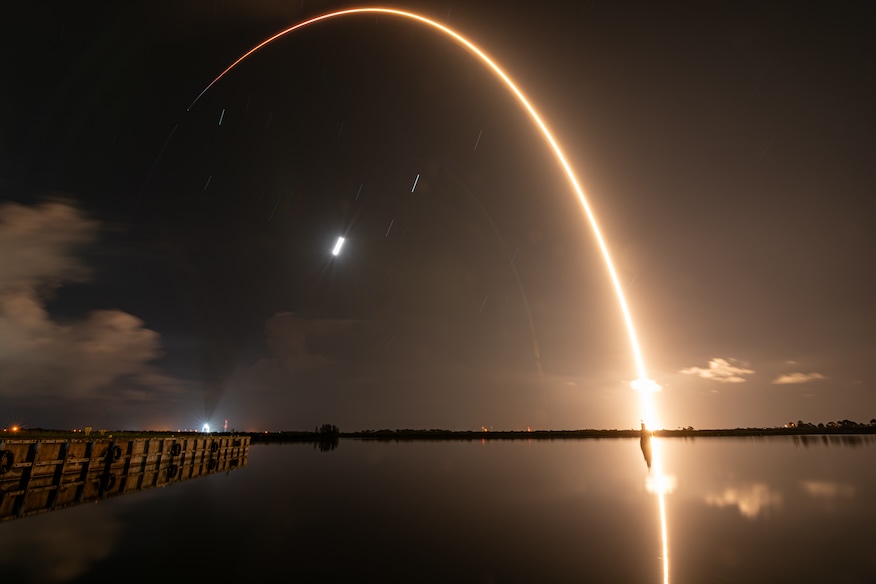
SpaceX’s Falcon 9 rocket has been grounded by the Federal Aviation Administration for the second time in less than two months, following the failed landing of a first-stage booster that had earlier helped launch a batch of satellites for the Starlink network.
The booster, serial number B1062 in the SpaceX fleet, suffered a hard landing at the end of its record 23rd flight. It was consumed in a fireball on the deck of the drone ship ‘A Shortfall of Gravitas, which was stationed in the Atlantic Ocean about 250 kilometers east of Charleston, South Carolina. The mishap was the first booster landing failure since February 2021.
In a statement Wednesday, the Federal Aviation Administration said that while no public injuries or damage to public property have been reported, “the FAA requires an investigation.”

The FAA made a similar statement after a Falcon 9 failure on July 12 during the Starlink 9-3 mission, which resulted in the loss of 20 satellites. After that incident, the SpaceX rockets did not return to flight until the Starlink 10-9 mission on July 27.
“Losing a booster is always sad. Each of them has a story and a unique character. Fortunately, this does not happen often, due to the robust design and the vigilance of the team,” said Jon Edwards, vice president of SpaceX of Falcon Launch Vehicles, in a social media post.
“We are working as hard as we can to properly understand the root cause and get corrective actions in place ASAP. One thing we do know is that this was purely a recovery issue and did not threaten the primary mission or public safety.” .
The booster failure came the same week that SpaceX had to twice delay an attempted launch of the Polaris Dawn astronaut mission, first due to a helium leak and then due to recovery time at the end of the mission.
“Challenging week for sure, but launching requires #grit and the team will persevere,” wrote Kiko Dontchev, SpaceX’s vice president of Launch on X, ex-Twitter, in response to Edwards’ post. “Lessons learned from recovery failures not only improve recovery reliability, but also climb reliability.”

The Polaris Dawn crew remains in quarantine for now, according to Isaacman’s social media posts, but the timing of the next launch attempt is uncertain. In addition to the landing weather issues and resolving the FAA investigation, there is also the matter of launch pad availability.
Polaris Dawn is ready to take off from Launch Complex 39A at the Kennedy Space Center. That pad is needed for the launch of NASA’s Europa Clipper mission, which has a tight 21-day planetary launch window that opens on Oct. 10.
It takes SpaceX about three weeks to transform the pad from a Falcon 9 to a Falcon Heavy configuration, so Polaris Dawn needs to release pad 39A soon or face further delays.
Complicating matters, SpaceX is already using its other Florida pad, Space Launch Complex 40 at Cape Canaveral Space Force Station for NASA’s Crew-9 mission to the International Space Station, which is set for no earlier than September 24 .
The timing of the Polaris Dawn launch will ultimately depend on how quickly the FAA clears SpaceX to return to flight and how the weather plays out.

